#Gaboon viper
Text


some sneks
736 notes
·
View notes
Text

Ms. Piggy the Gaboon viper - Photo by Nathan Jordan
474 notes
·
View notes
Text



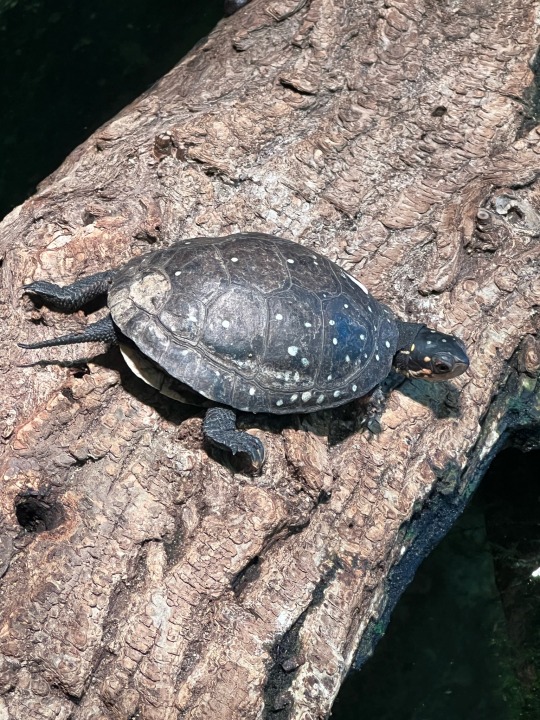





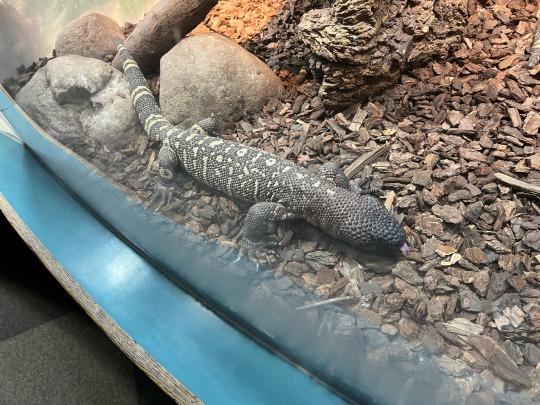
Lincoln Park Zoo has a relatively small herp collection, but it's very nice and has some absolutely adorable critters. Check out the beaded lizard blep at the bottom!
#reptile#lizard#lincoln park zoo#beaded lizard#gaboon viper#dwarf crocodile#Jamaican iguana#knight anole#spotted turtle#Aruba island rattlesnake
151 notes
·
View notes
Text
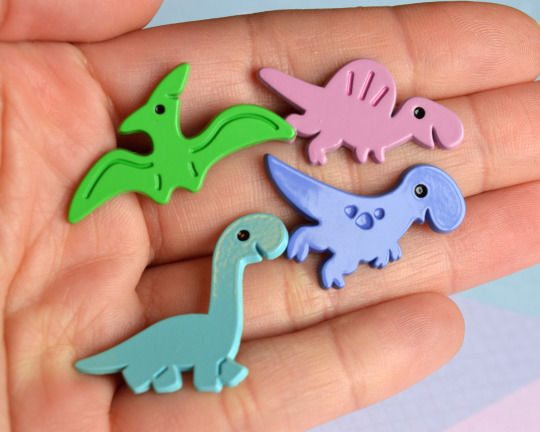

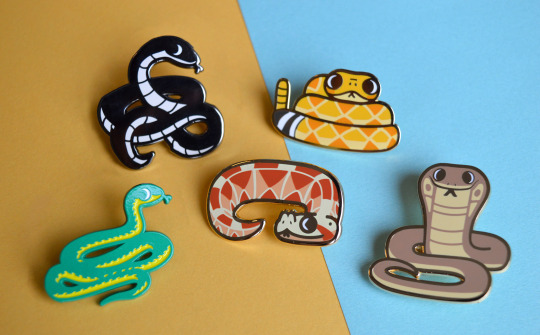

my current reptile merch!! 🐍
I'm gonna be at the LA Reptile Super Show this weekend, so if you have any suggestions for more little guys feel free to comment/tag em
shop
etsy (UK/EU)
#my merch#reptile#rattlesnake#tw snakes#snake tw#hognose#snakes#dinosaur#spinosaurus#brontosaurus#tyrannosaurus rex#rainbow boa#egg eating snake#ball python#gaboon viper#king cobra#black mamba#green tree python#reptiblr#herpblr#snakeblr#corn snake#so many tags
189 notes
·
View notes
Text

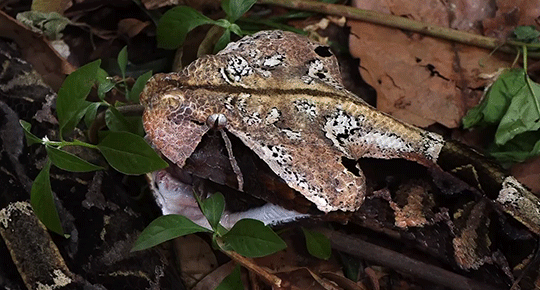

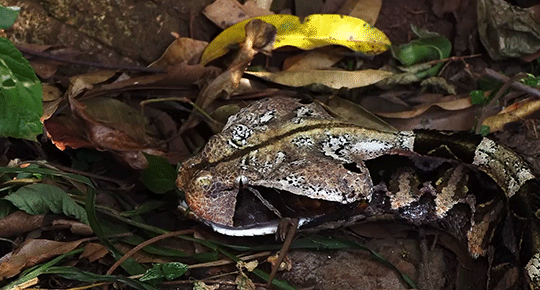

The longest fangs and highest venom yield of any venomous snake belong to the Gaboon viper. Unlike smaller, less strong species of viper they will bite their prey and hold on to it rather than letting it go and waiting for it to die.
©Living Zoology
76 notes
·
View notes
Text

Experimental piece for Udenpah on Twitter in exchange for a voucher!
#finished#furry#digital#digital art#waist-up#waist up#snake#viper#scalie#reptile#anthro art#furry art#anthro snake#snake character#anthro artist#furry artist#artists on tumblr#digital artist#gaboon viper
264 notes
·
View notes
Text

Part 15!
Snake prejudice
122 notes
·
View notes
Text

Puppy dog eyes 🥺
14 notes
·
View notes
Text
Uncharismatic Fact of the Day
Gaboon vipers have the longest fangs of any snake species, reaching up to 5 cm (2 in) in length. Despite the size of their fangs, and the extremely strong venom they use these fangs to deliver, gaboon vipers are notoriously docile and many researchers have reported handling them with little to no protection (though this is not recommended for untrained professionals).
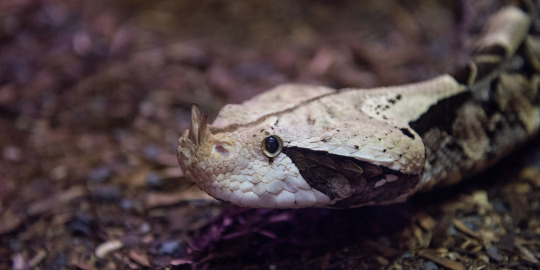
(Image: A gaboon viper (Bitis gabonica) by Connor Padraic Mallon)
If you like what I do, consider leaving a tip or buying me a ko-fi!
#gaboon viper#Squamata#Viperidae#vipers#venemous snakes#snakes#serpentes#serpents#reptiles#uncharismatic facts
81 notes
·
View notes
Text

@youcanchangetheseright I came so, so close to putting the gaboon viper in, they were one of a lot of awesome snakes I had to tearfully cut from the final bracket just for the sake of keeping it a manageable size for my own sanity
But! Since you've given me this wonderful opening there is so much that is cool about the gaboon viper (Bitis gabonica) so I'll list just a few facts here! They're found in sub-Saharan Africa, and thrive in rainforests and savannas with high humidity, preferring to find areas with plenty of foliage and leaf litter to hunker down in. They are slow moving snakes, and while they will actively hunt for food at times they most often find a cozy, hidden spot to wait in ambush.
They're not the largest vipers in the world, but they are the largest of the African vipers, and they have the longest fangs (typically around 2 in) and the highest venom yield of any snakes. Despite their formidable fangs and striking speed, gaboon vipers are typically calm and they rarely bite humans.
Probably my second favorite fact about gaboon vipers is that during mating season, males will wrestle with each other! The wrestling is initiated by one male rubbing his chin over the back of his opponent, and they can remain locked in combat for long periods of time. They may even take a break so they both can rest, then get right back into the fight! A winner is 'declared' when one male pins the other's head to the ground while raising his own into the air. Not so different from human wrestling!
But my most favorite gaboon viper fact is that they often get around using rectilinear locomotion, which means that instead of slithering from side to side they will use muscles on their side and belly to trundle forwards in a straight line. Like this:
How sweet is that, like a great big scaley caterpillar! All snakes are capable of rectilinear locomotion, and will use it as the need arises, but gaboon vipers (and other heavy bodied snakes) seem to prefer it as their main way of getting around, and something about their pudgy body shape just makes them so endearing to watch when they're on the go!
This turned into a long post lol but just like all the snakes I included and the many, many snakes I didn't have room for there is so much to love about the gaboon viper!
35 notes
·
View notes
Text


At the Philadelphia Zoo—found my favored child.
77 notes
·
View notes
Text
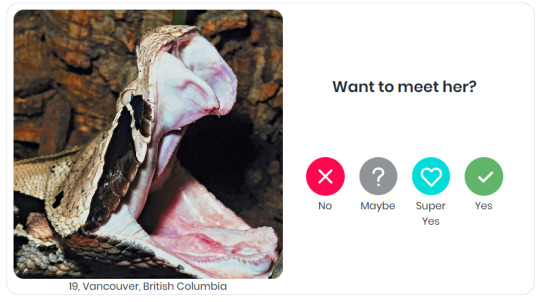
23 notes
·
View notes
Text

what the fuck
13 notes
·
View notes
Text
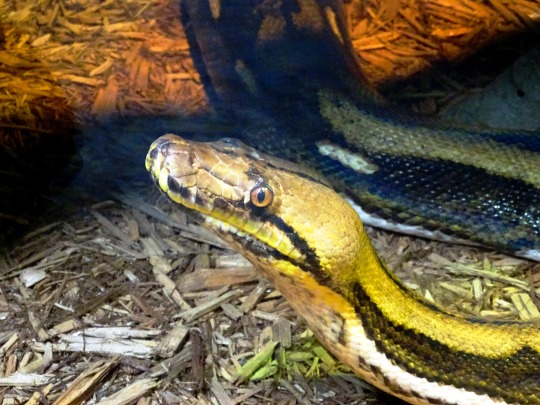
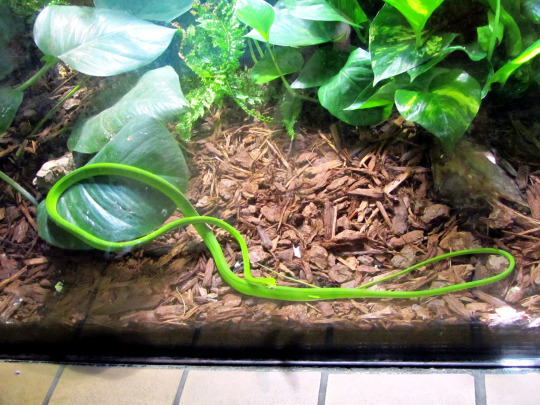

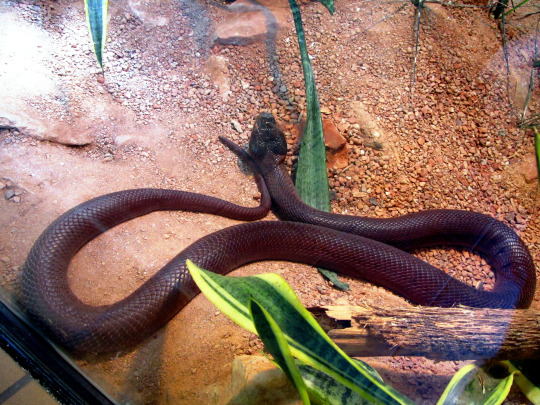
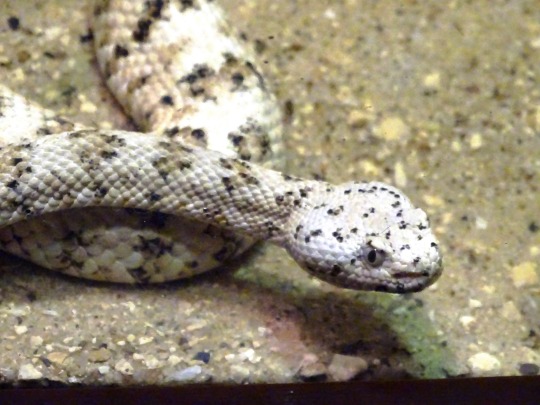
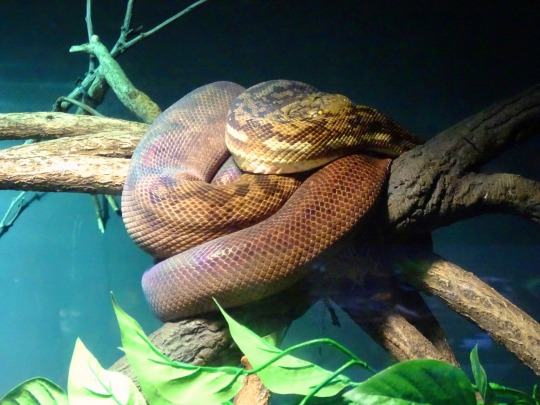
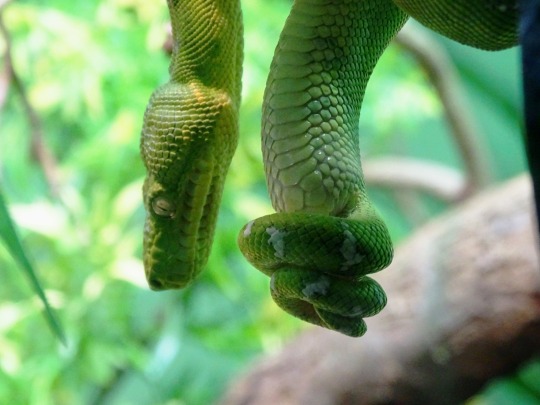

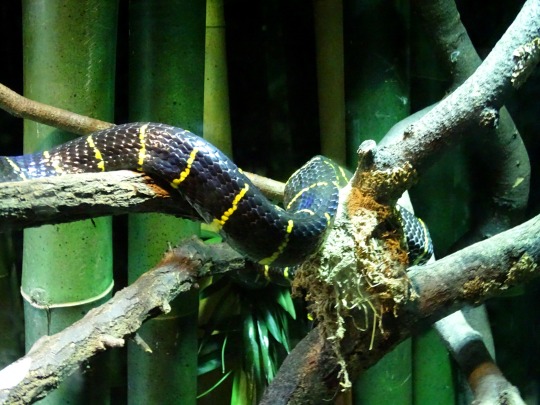
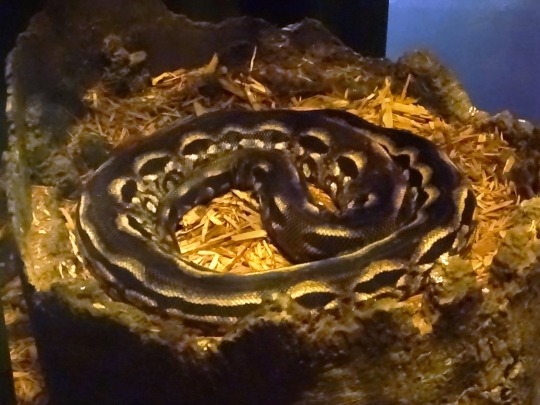
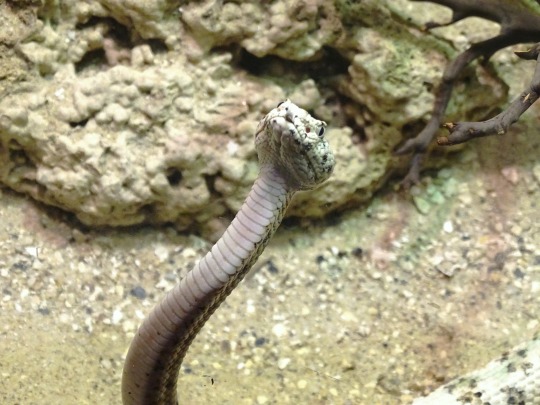

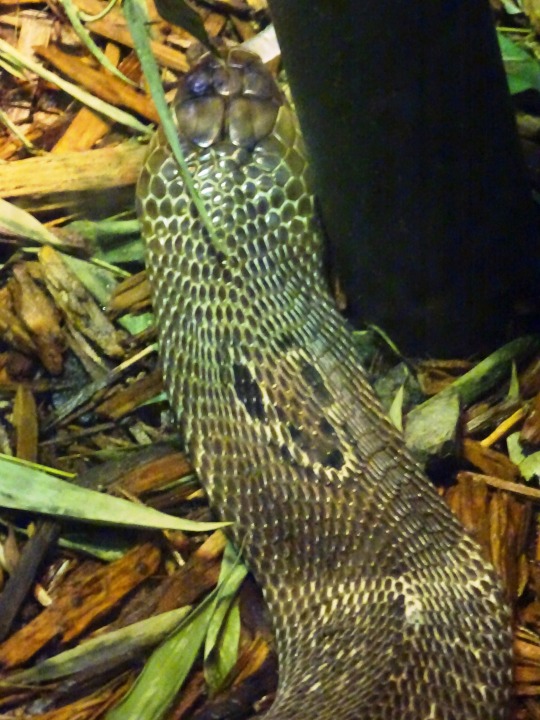
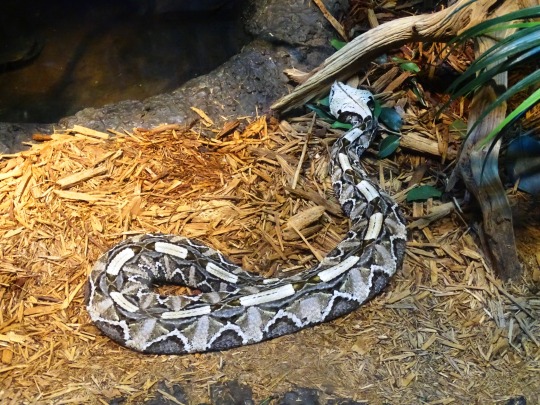
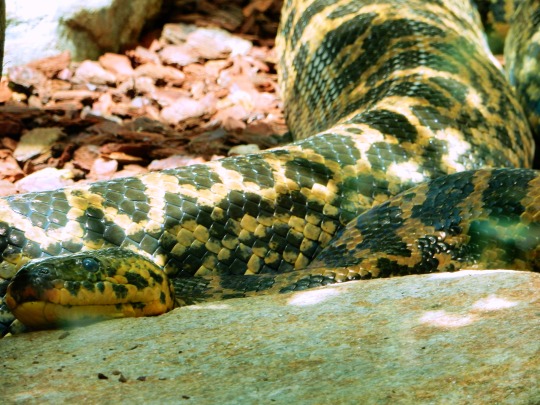
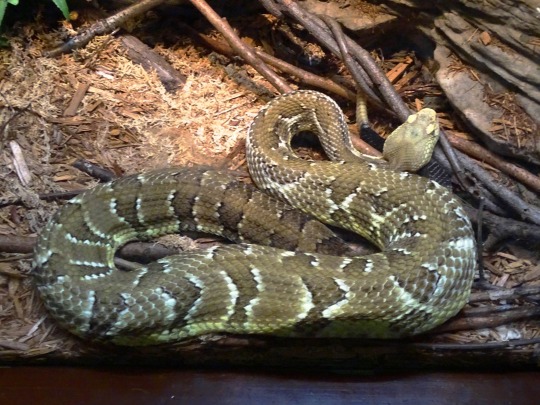
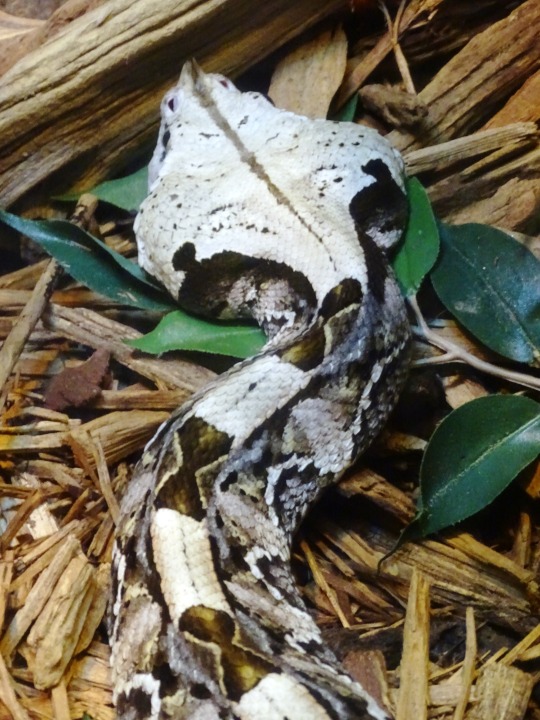
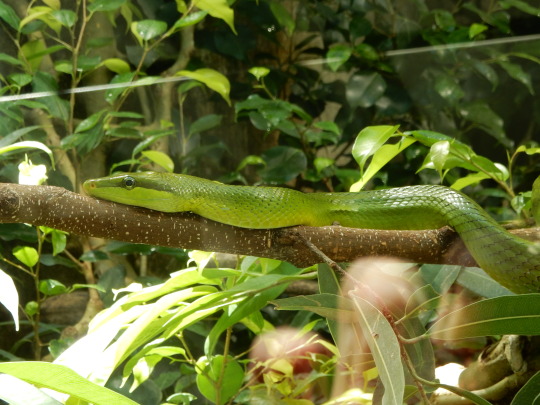


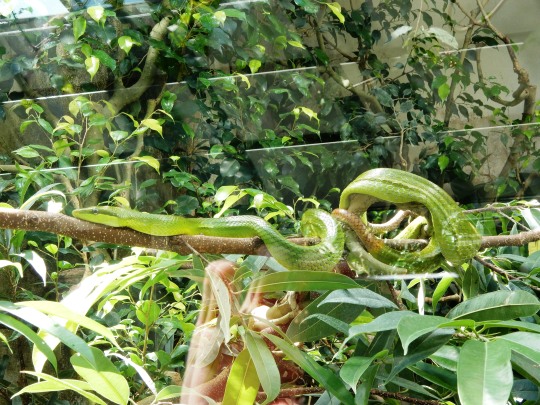
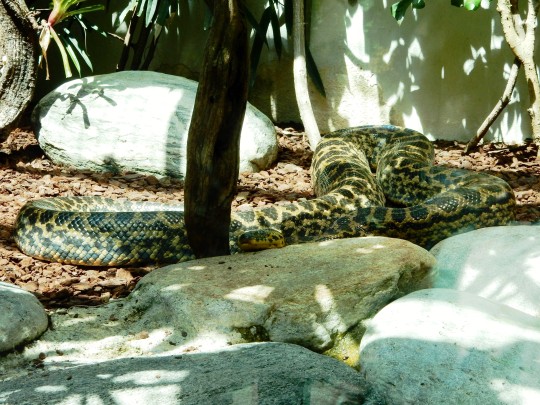
National Serpent Day
National Serpent Day is observed annually on February 1. It’s a tradition that has been in practice for at least five years, as a way to encourage everyone to widen their understanding of snakes to overcome their fear of serpents.
History of National Serpent Day
National Serpent Day is observed every year to appreciate snakes. They have been known to humans for centuries and have evolved over an even greater period in history.
Snakes are perceived as the symbol of medicine, good, evil, fertility and have been seen as sacred since ancient times because of their venom. The venom is said to have healing properties that modern studies have proven can produce painkillers, drugs for hypertension, and even treatments for strokes, heart disease, and possibly even cancer.
The precise origin and history of National Serpent Day are not clear; however, the day has been set aside for at least five years as a way to encourage everyone to widen their understanding of snakes and to overcome their fear of serpents.
Historically, the origin of snakes being ‘evil’ as it is today is seen from the rhetoric of Adam and Eve and the role snakes played throughout biblical literature. It is as such for cunning Eve to consume from a tree forbidden by God. Eve’s act of obeying the snake instead of God’s instruction is assumed to be linked with the beginning of the bad things that happen presently according to Christianity. National Serpent Day is to rewrite the negative stories around snakes and inspire humans to reflect and come to grips with their fears for it. Most snakes are known to animal scientists as shy and retreating. None will attack a person unmolested.
Studies show snakes go as far as to coil up and rattle to warn approaching humans of their intention to be left alone and striking only as a last resort when they feel trapped or cornered.
National Serpent Day timeline
1869 — 1897 Edward Drinker Cope’s Findings
His contributions include extinct reptile fossils leading to an understanding of snakes.
1969 “Biology of the Reptilia” is First Published
It serves as a reference to topics on the evolution of amphibians and reptiles.
2001 Modern Research on Snakes Starts
The University of Texas publishes a survey on the ossification in neonatal squamates.
2015 The Oldest Snake Fossil Ever Is Found
A 113 million-year-old fossil of a four-legged snake is discovered in Brazil.
National Serpent Day FAQs
What do serpents symbolize?
Snakes are believed to represent power, good, evil, fertility and have healing powers. They can shed their skins and emerge reborn, thus they are also identified with the symbol of regeneration or rebirth and immortality.
What do snakes represent in tattoos?
Snakes are an ancient symbol of rebirth, temptation, fertility, and power that is often depicted in tattoo arts with those things in mind.
Can a snake love you?
Snakes may become tolerant toward their owners but in general, they aren’t affectionate toward humans.
How to Observe National Serpent Day
Visit a nearby zoo
Learn about them
Celebrate on social media
Spend the day at a nearby zoo seeing the different snakes learning their distinct characteristics to observe National Serpent Day. Go as far as understanding how and why they react to a human invasion. You might even invite friends on your trip to uncover which one has the greater fear for the serpent and conquer your herpetophobia together!
Take National Serpent Day as a time to research snakes native to your area. Understand which ones are deadly and ways to recognize them. You might also read about ancient stories of how they are used in medicine or dive into modern literature to see the role they portray in them: Like Kaa in “The Jungle Book” by Rudyard Kipling, or Nagini in J.K. Rowling’s “Harry Potter” series.
If you’re a snake lover, there’s no better way to observe National Serpent Day than posting selfies of yourself and your snake friend on social media to help everyone else overcome their fear of it. You can use #SerpentDay or #NationalSerpentDay to track discussion.
5 Things You Should Know About Snakes
Snakes have remedial properties
There are thousands of snake species
Snakes eat their prey whole
They are mostly non-venomous
They sometimes give live birth
Snakes have been sacred since ancient times because their venom is thought to have healing properties and studies show it's used to produce painkillers and drugs for hypertension and might even help with treatments for strokes, heart disease, and maybe even cancer.
Researchers have identified roughly 3,000 species of snakes existing around the world.
Snakes are known for their ability to swallow as a whole, prey up to three times larger than the diameter of their head due to their upper and lower jaws being separate.
According to scientists, only one out of eight of the known snake species are venomous.
Snakes are mostly known to lay eggs; others give live birth too.
Why National Serpent Day is Important
It encourages overcoming our fear of serpents
It helps us appreciate their existence
It promotes our understanding of snakes
National Serpent Day’s purpose is to help us overcome our fears of snakes. It serves as a day to especially help us to form a friendly bond with the ancient animal.
Snakes are a symbol of power, good, evil, fertility, and have been known to have remedial properties useful to humans for ages. National Serpent Day serves as a day to appreciate their existence on earth for these reasons.
The reason for National Serpent Day is to help give awareness of snakes with the hope that it would lead us to conquer our fears. On this day everyone is encouraged to take their time to research and learn about snakes native to their area.
Source
#Anaconda#Madagascar Ground Boa#Bronx Zoo#New York City#summer 2019#original photography#NationalSerpentDay#reptile#USA#vacation#animal#National Serpent Day#1 February#Burmese Python#Red-tailed Rat Snake#Southwestern Speckled Rattlesnake#Emerald tree boa#speckled rattlesnake#Gaboon Viper#yellow anaconda#Zoo Zürich#Schweiz#Switzerland#San Diego Zoo
2 notes
·
View notes

